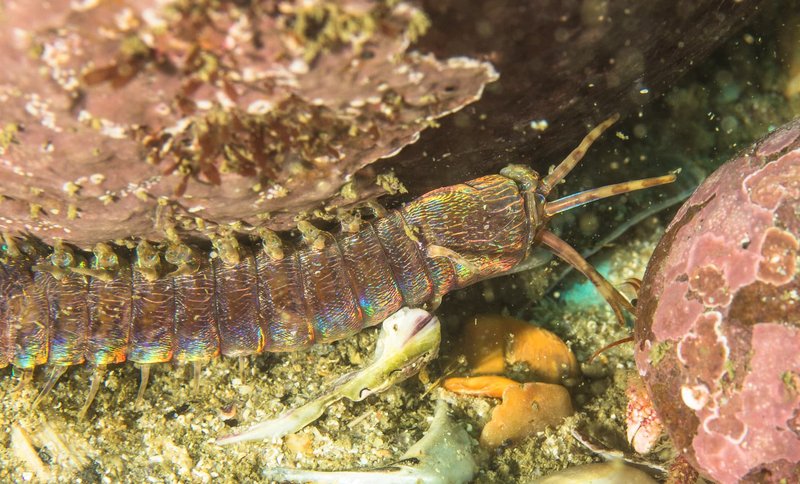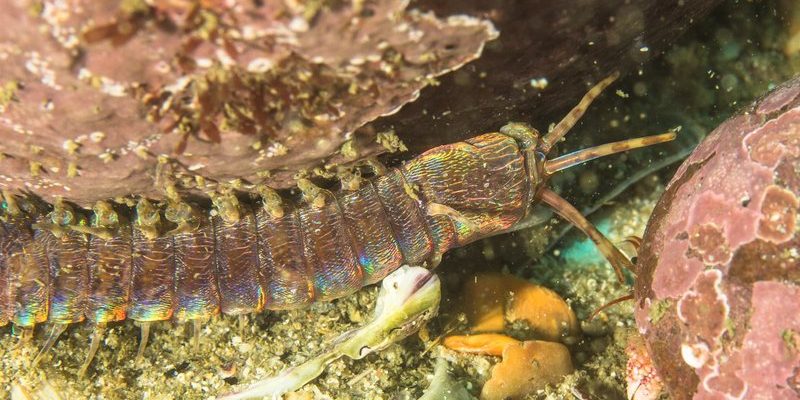
You might be wondering why anyone would allow such creatures into their tanks in the first place. Well, Bobbit worms can be a sneaky addition, often hiding in live rock or coral. They’re not always easy to spot, and by the time you notice the signs of fish losses, it can feel like a game of whack-a-mole. In this article, we’ll unfold the mysteries surrounding Bobbit worms and give you the inside scoop on how to handle them if they decide to make your reef tank their home.
What Are Bobbit Worms?
Bobbit worms are fascinating creatures with a somewhat sinister reputation. Scientifically known as *Eunice aphroditois*, they can grow up to 10 feet long! These marine annelids primarily reside in tropical and subtropical waters. Their bodies are segmented and can vary in color, usually appearing greenish or reddish. What makes them truly remarkable—and a tad terrifying—is their ability to remain hidden. They bury themselves in the substrate, leaving only their sharp, bristle-covered head exposed.
Let’s face it: if you’re an unsuspecting fish swimming by, a blow dart from the depths isn’t exactly what you’d expect. Bobbit worms use these specialized bristles to snatch prey as they swim past. They’re quite efficient hunters, and their speed is alarming. Think of them as the ninjas of the reef—silent, quick, and deadly.
Signs of Bobbit Worm Infestation
So, how can you tell if you have a Bobbit worm lurking in your tank? Here are some key signs to watch for:
- Missing Fish: If your fish start disappearing, it’s time to investigate.
- Unusual Behavior: Notice any fish acting skittish or avoiding certain areas of the tank? They might sense danger.
- Trail Marks: Small, often wriggly trails in the substrate may indicate a worm’s presence.
These signs can be subtle, but they signal that something isn’t right in your tank. If you suspect a Bobbit worm, it’s crucial to act quickly. The sooner you identify the issue, the better your chances of saving your marine life.
How Bobbit Worms Affect Reef Tank Fish
You might be wondering just how serious the threat of Bobbit worms really is. Well, here’s the thing: they can pose a significant danger to your tank’s ecosystem. As ambush predators, their method of hunting is designed to catch unsuspecting fish off guard. If a fish swims too close, the Bobbit worm can strike with lightning speed, grabbing it with its powerful jaws.
This hunting technique can lead to noticeable fish losses in a short period. Imagine getting home from work only to find your favorite fish has vanished. It’s heartbreaking, isn’t it? Furthermore, Bobbit worms can affect the overall health of your reef tank. If the population of fish starts dwindling, it can disrupt the balance, potentially leading to algae blooms or other issues.
Preventing Bobbit Worm Invasions
Now that you know the potential risks, let’s talk prevention. There are several strategies you can employ to keep Bobbit worms at bay:
- Careful Selection of Live Rock: Before adding live rock to your tank, inspect it thoroughly. Look for any signs of Bobbit worms.
- Quarantine New Additions: If you’re adding new fish or coral, quarantine them first to minimize the risk.
- Regular Maintenance: Keep your tank clean and well-maintained. Regular water changes and substrate cleaning can help detect early signs of trouble.
By being proactive, you can greatly reduce the chances of a Bobbit worm infestation.
How to Remove Bobbit Worms
If you discover a Bobbit worm in your tank, what do you do? Removing them isn’t straightforward, but it’s not impossible. Here’s a step-by-step approach:
1. **Identify the Worm:** Make sure you’re dealing with a Bobbit worm and not a harmless species.
2. **Try Manual Removal:** Use gloves and tweezers to pull the worm out gently. This method can be risky because a severed piece can regenerate.
3. **Use Traps:** You can bait a trap using shrimp or fish food to lure the worm out of hiding. It might take some patience, but it can be effective.
4. **Seek Professional Help:** If you’re not comfortable handling it yourself, consider consulting with a marine biologist or aquarium professional.
It’s always better to err on the side of caution when dealing with these creatures.
Alternatives to Bobbit Worms
If you want to maintain a vibrant reef tank without the threat of Bobbit worms, consider some alternative creatures that can bring beauty without the risk. Here are a few options:
- Fireworms: Less aggressive and can help with detritus cleanup.
- Bristleworms: These can also assist in cleaning up waste but are generally less harmful than Bobbit worms.
- Snails and Shrimp: Cleaner shrimp, for instance, can thrive in your tank and help ward off algae without the risk of predation.
Choosing the right residents for your tank can help maintain a healthy environment.
Bobbit worms may seem like a fascinating aspect of marine life, but they can turn your beloved reef tank into a battleground. The key is vigilance—keeping an eye on your fish and maintaining a clean, happy environment. With the right precautions and knowledge, you can protect your aquatic friends and enjoy the beauty of your reef without fear of these hidden predators.
If you ever find yourself in a situation with a Bobbit worm, don’t panic! You’ve got the tools and tips to tackle the problem. Just remember, awareness and proactive measures are your best allies in keeping your saltwater haven safe. Happy fishkeeping!

